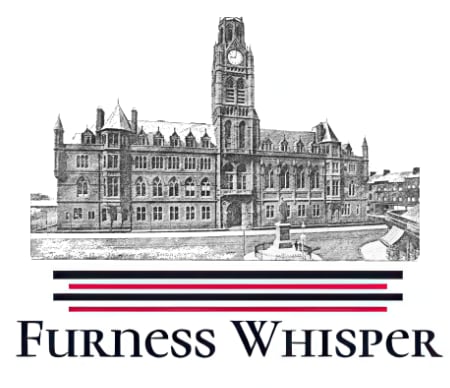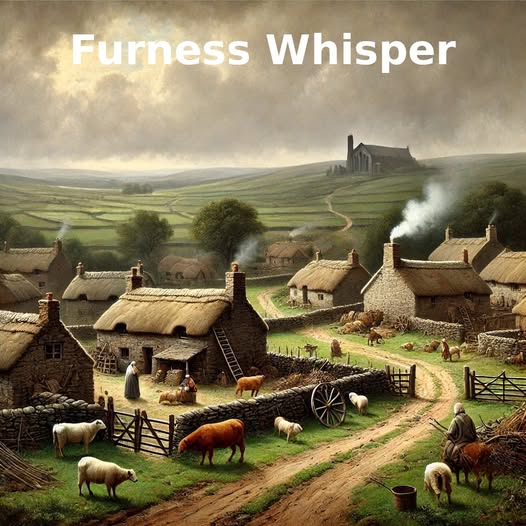Sellergarth is a name that often appears in historical texts, particularly in discussions about the Furness region in Cumbria, England. Many modern books and historical writings repeat the same narrative about the destruction of Sellergarth by monks in 1516, led by Abbot Alexander Banke of Furness Abbey. Yet, as we delve deeper into the mystery, an important question arises: Was Sellergarth truly a village, a hamlet, or simply an area name? And why do modern accounts often echo the same story, without addressing this uncertainty?
Sellergarth in Historical Context
The mention of Sellergarth primarily revolves around its destruction during the Tudor period when it was demolished to create parkland for the Abbot’s pleasure. But despite its significant role in this event, Sellergarth’s exact status remains somewhat unclear. Unlike other well-documented medieval villages, it’s striking that Sellergarth doesn’t appear in the Domesday Book of 1086, the comprehensive survey commissioned by William the Conqueror. The absence of Sellergarth from this record raises several intriguing possibilities.
A Village? A Hamlet? Or Just a Name?
The fact that Sellergarth was not mentioned in the Domesday Book has led us to question whether it was truly a village at all. Given the detailed nature of the Domesday survey, which recorded settlements of all sizes, it’s curious that Sellergarth was overlooked. Could it have been too small to register? After all, the Domesday Book often only mentions settlements with a certain level of significance, such as those with a considerable population or notable structures.
Alternatively, Sellergarth may not have been a permanent, established settlement at all. Historical references to Sellergarth may be more reflective of an area or a specific location, rather than a settled village. It’s possible that the name referred to a cluster of farmsteads or a loose collection of landholdings—something closer to a hamlet or even just a location name within the broader Furness area.
The Evolution of Sellergarth’s Identity
What complicates the story further is that Sellergarth’s lands were extensive. Historical documents from the time of its destruction show that the village’s holdings included substantial farmsteads such as Manor Farm, Breastmill Beck, and Rakesmoor farms. This suggests that the region was economically significant and that the name “Sellergarth” could have represented a network of these farmsteads rather than a standalone village.
One theory, presented by historian William Barrow Kendall, suggests that after its destruction, the Abbot of Furness resettled the displaced tenants in neighbouring villages like Hawcoat and Newbarns. This might indicate that while Sellergarth was a recognised area, it was perhaps never large enough or cohesive enough to be considered a fully-formed village in the traditional sense. Instead, it might have functioned more like a patchwork of smaller agricultural holdings or communities.
The Role of Enclosure and the Monastic Influence
Abbot Alexander Banke’s destruction of Sellergarth in 1516 was part of a larger pattern of land reorganisation by the monasteries. The conversion of arable land to parkland for hunting was a common practice at the time, especially in regions under monastic control. The monks’ motives were not purely for leisure—they were also consolidating land to increase productivity and generate more income for the abbey. Thus, the destruction of Sellergarth, whether a village, hamlet, or just an area, was driven by economic and social pressures that led to the displacement of its tenants.
Imagine the scene: the sharp scent of damp earth rising from the fields, the creak of timber and the rustling of leaves as the monks moved across the landscape, ordering the removal of people from their land. The once-bustling activity of farming, the distant hum of life, was replaced by the silence of land cleared for the park. In a landscape transformed, the echoes of lives once lived here fade into the mist, as Sellergarth disappeared from the map, swallowed by the abbey’s ambition.
Why No Mention in the Domesday Book?
The absence of Sellergarth from the Domesday Book remains one of its most perplexing features. One possible explanation is that Sellergarth existed as a relatively small or insignificant community during the time of the Domesday survey. It may have been considered too minor to warrant inclusion, or it could have been a name for an area rather than a formal settlement.
Another consideration is the idea that Sellergarth’s importance may have grown after the Domesday survey, particularly during the medieval period. As the region around Furness Abbey became more developed, Sellergarth could have evolved from a collection of farmsteads into a larger settlement—only to be destroyed later, during the early 16th century, in the name of creating parkland.
Adding Evidence from the Coucher Book and Court Records
To further understand Sellergarth’s nature, we can look to the Coucher Book of Furness Abbey and contemporary court records:
Sellergarth in Land and Rental Records:
The Coucher Book references “Sellergarth, 587, 590 n., 665,” indicating its presence in abbey land and rental records.
Abbey Rental Records detail “Sellergarth (7s. 4d.)” as a parcel of demesne lands, listed alongside other lands and pastures, showing it was a recognised landholding. This list of lands also shows the various other agricultural endeavours taking place in the area.
Sellergarth in Court Cases:
Court records reveal disputes involving residents of Sellergarth, such as “John Cowper v. Robert Rig of Sellergarth” and “William Bouth of Dalton v. Robert Rig of Sellergarth.” These cases demonstrate that Sellergarth had identifiable residents and was a location recognised in legal proceedings.
These records provide concrete evidence that Sellergarth was more than just a vague area name; it was a recognised location with landholdings and inhabitants.
What We’re Looking For
With Dan Elsworth (Greenlane Archaeology, Ulverston), Gill Jepson, and Les Eveson,
we are searching for:
Estate Records – Did Furness Abbey list Sellergarth as land or a settlement? These records could help clarify whether it was officially recognised as a village or just a group of holdings.
Duchy Court Records – If tenants were evicted in 1516, was it from a village or scattered farms? These documents can provide insight into the structure of Sellergarth and its relationship with the surrounding land.
Old Maps – Was Sellergarth ever marked as a village? Historic maps could give us a visual clue about how Sellergarth was perceived and documented during its time.
Join the Search
The wind still moves through the fields where Sellergarth once stood—or never stood at all. The area around Sellergarth, now a quiet part of Furness, holds the potential to reveal new clues about this enigmatic place. Picture the soft sound of footsteps in the undergrowth, the rustling of ancient leaves, as we search for hidden records, forgotten maps, and long-lost knowledge that may tell the story of Sellergarth.
#Sellergarth#LostVillage#Furness#Cumbria#History#Archaeology#LocalHistory#MedievalEngland#TudorEngland#Monasteries#DomesdayBook#HistoricalMystery#LandRecords#OldMaps#CommunityResearch#HistoryBuffs#CumbriaHistory#ExploreCumbria#HiddenHistory

